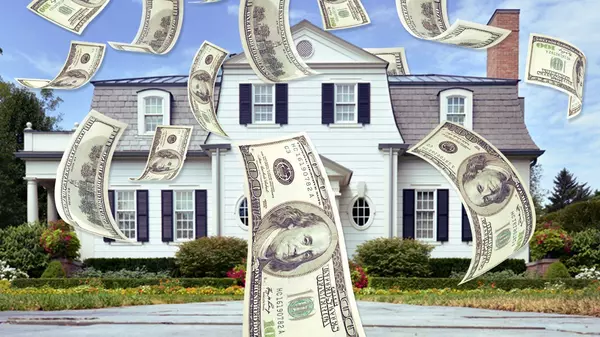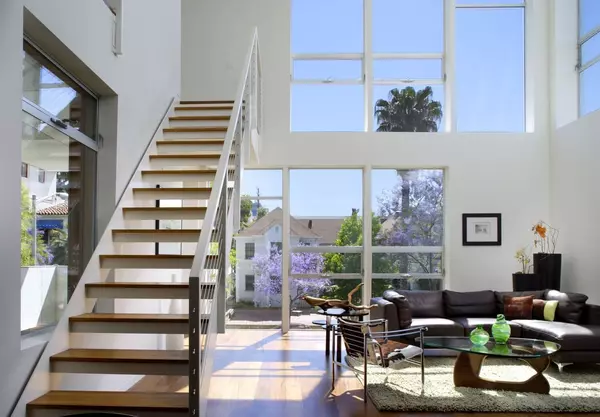South Dakota is Winning in Affordability and Homebuilding: Can Governor Rhoden Keep the Momentum Going?

South Dakota’s housing market continues to stand out in the heartland.
The Realtor.com® State-by-State Housing Report Card gave the Mount Rushmore State a strong B, reflecting solid affordability and steady construction. The report—part of the Let America Build campaign—measures how well states balance home prices with new construction to meet demand. South Dakota’s results show a healthy market that’s growing sustainably, even as population gains and rising costs begin to test its capacity.
Hoping to get the same results in the rest of the country, President Donald Trump recently put pressure on homebuilders to increase construction nationwide, given the issues with construction in the country. In a post on his Truth Social platform in early October, he accused major builders of hoarding lots to prop up prices—likening them to OPEC, which restricts oil output to maintain high prices.
“They’re my friends ... but now, they can get Financing, and they have to start building Homes. They’re sitting on 2 Million empty lots, A RECORD,” Trump wrote. He urged Fannie Mae and Freddie Mac to intervene and “get Big Homebuilders going” to “restore the American Dream.”
So how is South Dakota earning their high grading?
South Dakota’s “B” grade explained
South Dakota earned a total score of 67, placing it among the better-performing housing markets nationwide. The state’s median listing price was $380,391 in 2024, paired with a median household income of $73,956.
On the supply side, South Dakota continues to build at a competitive pace. The state accounted for 0.4% of national housing permits in 2024, nearly matching its 0.4% share of the U.S. population—giving it a permit-to-population ratio of 1.0. The new construction premium—the price difference between new and existing homes—was 11.4%, typical for the region and reflective of the higher costs associated with newer builds.
Realtor.com economists agree that states like South Dakota that balance of affordability and consistent building activity put themselves in a favorable position for new buyers. Still, limited labor and material availability could constrain future growth if demand continues to rise.
The Midwest’s steady foundation
The Realtor.com New Construction Insights report shows that new construction is helping stabilize affordability nationwide. The median new-home price held steady at $450,797, while resale prices rose 2.4%, narrowing the national new construction premium to 7.8%—the lowest level in the dataset’s history.
The Midwest remains a key region for affordable housing, with its moderate land prices, lower building costs, and stable job markets. South Dakota, along with Nebraska and Iowa, continues to outperform much of the country on affordability while maintaining manageable price appreciation.
Rapidly growing cities like Sioux Falls and Rapid City have become housing bright spots, where builder activity is keeping up with population growth while avoiding the severe affordability declines seen elsewhere.
“America is short more than 4.7 million homes, and every new home built helps close that gap while fueling local economies," says Shannon McGahn, executive vice president and chief advocacy officer at the National Association of Realtors®.
"NAR research shows that the U.S. has faced a persistent housing shortage for more than a decade, driving up prices and limiting options for buyers. Expanding housing supply creates jobs, supports small businesses, and affords families the opportunity to build generational wealth.”
Governor Noem’s housing investment strategy
As the lieutenant Governor in Kristi Noem’s administration, Larry Rhoden took over as governor in January 2025 when Noem took the post of Secretary of Homeland Security.
During his short tenure, he has not specifically addressed expanding new home construction initiatives in the state. However, in October 2025, he announced his vision to use $30 million of housing infrastructure money to offer interest-free loans of up to $15 million each for expansion projects at the Sioux Falls and Rapid City airports.
“We’ve seen huge increases in travelers coming through these airports,” Rhoden said while making the announcement at the airport in Sioux Falls, according to local outlets. “With more gates, more flights, and more destinations, we’ll be able to draw more visitors.”
The money would come from the Housing Infrastructure Financing Program, which Noem created in 2023. To date, the fund has supported 83 projects statewide, helping to create 7,360 single-family housing lots and 5,754 apartment or other multi-family units.
When pressed about using the funds on projects outside of housing for residents, Rhoden’s spokeswoman, Josie Harms, told South Dakota Spotlight:
“It wouldn’t have been right to use these dollars sooner, before they had the opportunity to be used for housing development — but by now they have,” the statement said. “Most of the original $200 million was invested into housing, and what remains is currently sitting unused; therefore, adding no value to South Dakotans. It’s only right to invest these dollars so that they are actively adding value to our great state.”
South Dakota’s B grade reflects a market that’s doing most things right—steady construction and manageable prices. But if new leadership makes a shift in infrastructure investments, that could change the state's placement on the ranking list next year.
This article was produced with editorial input from Dina Sartore-Bodo and Gabriella Iannetta.
Categories
Recent Posts











"My job is to find and attract mastery-based agents to the office, protect the culture, and make sure everyone is happy! "
